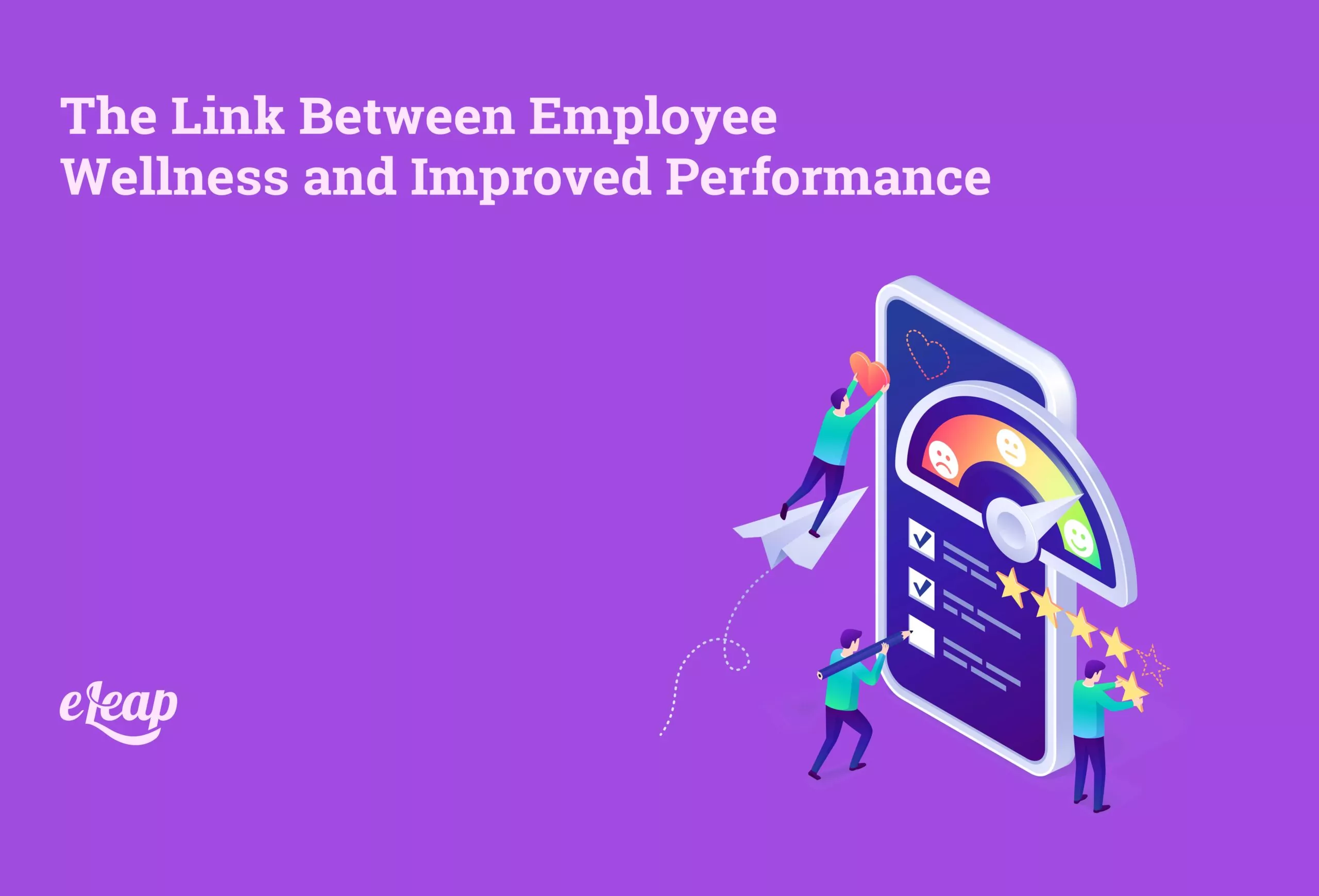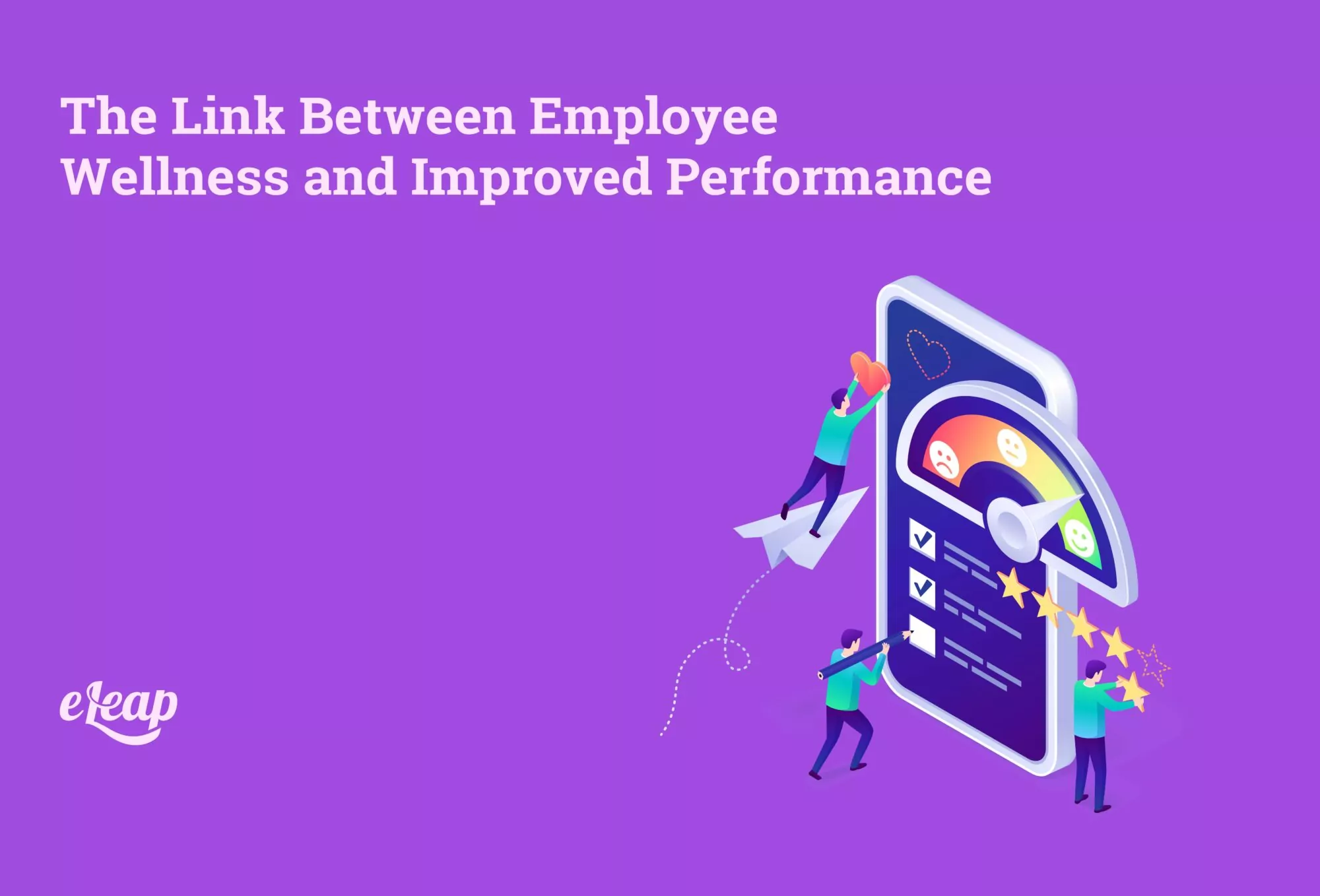The Link Between Employee Wellness and Improved Performance

Discussions surrounding employee performance almost invariably lead back to ideas like accountability and engagement. Autonomy, trust, and communication – are essential factors, too. However, there is one metric that affects performance many leaders overlook: wellness.
The connection between employee wellness and improved performance may seem tenuous at first, but the truth is that there is a direct, strong correlation between the two concepts. This post will explore how employee wellness affects performance and why wellness-focused programs and initiatives might be as critical as check-ins and one-on-ones in your drive to bolster results.

The Connection between Performance and Wellness
We will begin by establishing the connection between these seemingly disparate ideas. The connector here is another much-discussed element of a successful business – engagement. The logic goes something like this: employees who are more engaged with their work perform better.
Of course, improving engagement is a tricky, often complicated process, and many organizations stumble along the way. Employee wellness programs offer a proven way to increase engagement. After all, when employees are sick, tired, and rundown, they’re not able to do their best work. It also leads to disengagement, meaning that you may experience a downturn in performance.
To drill down into this a bit further, consider the direct impact of stress on your workforce. According to a survey by Cigna, four-fifths of all employees say that they are dealing with increased stress in the workplace. A significant portion of those employees report that their stress is severe or unmanageable.
The impacts of severe stress on the human brain and body are many-fold and include:
- Atrophy of brain tissues
- Loss of cognitive function
- Decrease in brain mass
- Development of debilitating, chronic health conditions
- Reduced short and long-term memory
- Increased depression and insomnia
- Increased blood pressure
- Increased risk for heart attack and stroke
Employees dealing with severe stress are incapable of doing their best work because they are increasingly unwell. If left untreated, the situation can result in outcomes ranging from increased absenteeism and decreased engagement to increased hospitalizations and even premature death.
How You Can Help
As you can see, employee health and wellness have a direct correlation with workers’ ability to perform their duties. As their health decreases, so do engagement and performance. The good news is that reversing these dangerous, damaging trends is surprisingly simple. Leaders simply need to get on board with the idea that employee wellness and performance are connected and then introduce initiatives to improve employees’ health. What kinds of initiatives might you offer?
Physical and Social Wellness Initiatives
Physical wellness initiatives offer help and support for employees struggling to find time to care for themselves or who lack access to the right tools and equipment. Note that investments here range from massive to modest and everything in between. Some enterprises have constructed entire on-premises gyms and fitness centers. However, that sort of thing is often beyond the scope of what’s possible for many organizations. Instead, consider paying for a gym membership or access to an area fitness center for your employees.
Of course, access to a gym/fitness center makes little difference if employees don’t have the time to exercise. Consider offering the ability for your employees to build exercise into their weekly schedule. You can do this in several ways, including:
- Offer flexible scheduling so that employees can work out when it fits their needs.
- Offer set times in the morning, afternoon, or evening for fitness.
- Provide paid time off specifically for exercise to encourage employees to take care of themselves.
With that being said, grand gestures and expensive memberships may not be possible for some organizations. However, it is no less important for smaller firms to encourage their employees to take care of themselves. In this instance, leaders can introduce a wide range of alternative options that cost less (or nothing), including:
- Weekly Yoga: Consider hosting a weekly yoga session for employees to help them improve their health and reduce stress.
- Encourage Walking: Encourage your employees to get up and walk 15 minutes out of every hour on the job to combat the effects of a sedentary lifestyle/job role.
- Meditation: Introduce meditation into the organization within meetings, check-ins, and one-on-ones.
- Focus on Breathing: Simply focusing on breathing for a few minutes every hour can help to dramatically reduce stress – encourage employees to “follow their breath” by taking regular breath breaks.
- Get Social: Wellness isn’t just physical. It’s also emotional and mental. Social wellness initiatives can help support emotional and mental wellness and can take many forms, from business softball teams to table tennis tournaments to hiking trips.
- Smart Watches: To help employees keep tabs on their health, consider investing in smartwatches for your employees. Wearables tied to a smartphone app can track everything from resting heartbeat to sleep quality, calories burned, and more, helping your people understand and track their health in meaningful ways.
- Support Connections: Humans are social creatures, and employees who do not have strong connections at work are less engaged, less productive, and more likely to quit. Help reverse those trends by focusing on employees forging strong connections with one another. Team retreats, cross-department training, and non-work related classes taken together are just some things that bring your people together and forge lasting bonds.
Authentically Improving Wellness and Performance
When done properly, physical and social wellness programs can do wonders to improve health, engagement, and, ultimately, performance objectives. However, you must take pains to come across as authentic here. If it is obvious that you’re only making a nod toward employee health because you want them to work harder, you will see little in the way of improvement. In fact, it’s entirely possible that your efforts will backfire and drive disengagement and employee churn.
Any actions you take should be first and foremost because you realize the value and importance of employee wellness and only secondarily focused on driving engagement and improved performance. Be authentic, and your employees will reward you. Try eLeaP free for 30 days to learn how you can support employee wellness and performance.